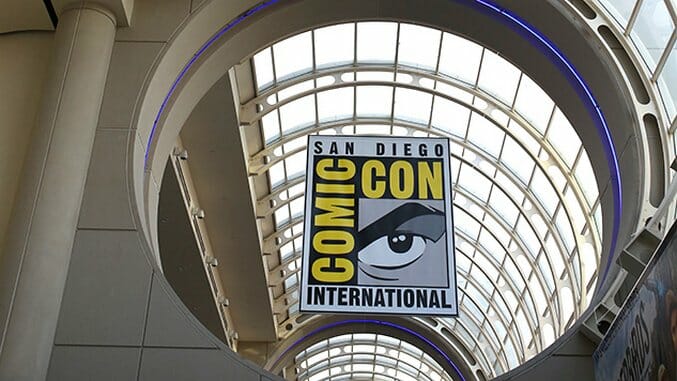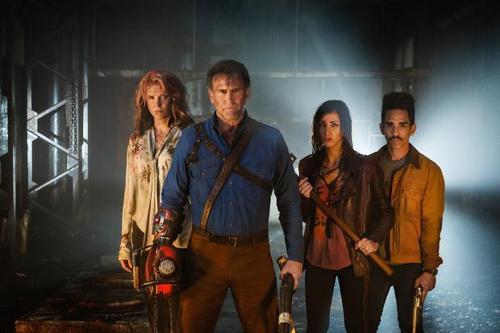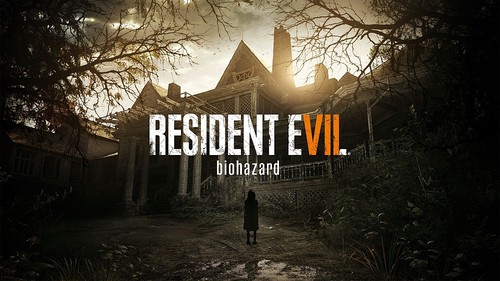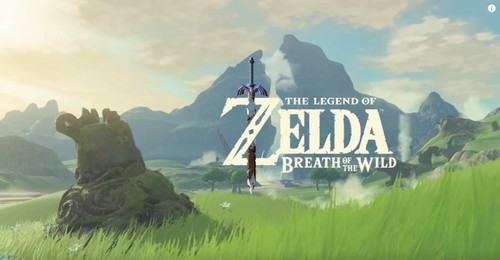The Summer Convention Post Mortem: What Made Us the Most Excited for This Fall & Winter

San Diego Comic-Con wreaked havoc on our calves and wallets exactly one month ago, and New York Comic Con promises a similar outcome in roughly a month and a half; fortunately, Small Press Expo will offer a refreshing indie oasis in-between and Cartoon Crossroads Columbus marks an intimate close to the year in mid-October. But did the swelling thermometers from the hottest summer in history match the heat generated from multimillion-dollar booth displays and publicists running on caffeine and calendar alerts? Here are our final thoughts from San Diego and the summer convention season on the best comics, games and shows we saw and what we can’t wait to see more of come cooler months. ![]()

Gerard Way’s DC Imprint, Young Animal, Promises to Make Comics Weird Again
At San Diego, Jim Lee admitted that Image Comics had planted an imposing flag in the creator-owned corner of the comics industry, a space once dominated by DC’s own mature readers label, Vertigo. If there’s any man who can alter that dynamic, it may be former DC intern and emo icon Gerard Way, whose previous scripts for Dark Horse comics The Umbrella Academy and The True Lives of the Fabulous Killjoys are possibly the only decent, let alone great, work to come from a mainstream musician who thought they could write superior sequential art. Way channels the surrealism of postmodern comics godfather Grant Morrison with a willful agenda to surprise. And he let everyone know as much.
In his pop-up imprint, Way will pen new issues of Morrison hallmark Doom Patrol with artist Nick Derington. The debut issue, out September 14, takes homage from Andy Warhol’s Velvet Underground/Nico cover art, substituting a banana for a gyro. (The tin foil mechanism apparently peels back to reveal a surprise beyond low-grade lamb meat.) The rest of the line will reinterpret other late ‘80s/early ‘90s game changers. Paste chatted with Shade the Changing Girl author Cecil Castellucci, herself a multimedia darling who’s made some damn fine punk albums as well as written some sterling YA novels. She was reticent to relay specifics, but her update of Peter Milligan and Chris Bachalo’s mind-melt epiphany will dance with themes of gender identification, music, adolescence and madness, illustrated by Marley Zarcone. The imprint will also release new titles Cave Carson Has a Cybernetic Eye by Way, Jon Rivera and Michael Avon Oeming and Mother Panic by Way, Jody Houser and Tommy Lee Edwards.
Between Castellucci and Way’s accounts, the imprint promises relevance and experimentation in a way that comics have lacked since their original Vertigo incarnations were published. If DC can nail its upcoming reintroduction to the Wildstorm Universe, it could continue to hold off Marvel on a monthly basis.![]()

Genre Continues to Make the Small Screen Its New Home
Starz splatterfest Ash Vs. The Evil Dead is more like a visual family tree than a show. In 1980, Producer Robert Tapert and former Michigan State University roommate Sam Raimi camped out in the local woods to film a scrappy, DIY celebration of plasma, pandemonium and Kandarian demons called The Evil Dead. They went on to make two sequels and an ascendant horror institution. Tapert would later create and produce a swords-and-sandals cable gem called Xena: Warrior Princess in 1995; the show lasted six seasons, which Raimi also produced. Tapert would marry Xena’s star, Lucy Lawless, three years after casting her in the titular role. Last October, all of these creators united once on one show—including Evil Dead staple Bruce Campbell—to summon ancient evil from a skin-bound book and tour the major conventions. And it’s been an insidiously good time. Appropriately, the second season (debuting Oct. 2) introduces the character of Ash’s father, played by original Six Million Dollar Man Lee Majors.
Ash Vs. The Evil Dead is proof that the Golden Age of television will continue to cultivate a genre foundation, flourishing past Game of Thrones’s benchmark to attract legacy actors, directors and producers with a full grasp of screens big and small. And superheroes be damned: Starz is also prepping Neil Gaiman’s American Gods, ran by narrative god Bryan Fuller (Hannibal), while HBO is spurring Michael Crichton’s 1973 sci-fi, dystopian novel Westworld for an October 2 release. Even if the major studios are pulling out of San Diego and New York, cable and premium outlets are instilling just as much excitement from filmmakers with just as much talent.![]()

More Virtual Reality Innovation and the Vastly Uncomfortable Resident Evil 7: Biohazard
Oculus Rift launched its assault on early adopters last spring, but we’re going to count on PlayStation VR, out this October, to be the great equalizer (or at least $200 cheaper). Many an industry icon has lamented the lack of innovation in today’s next-gen landscape. And they’ve been absolutely right—until now—because damn does donning a VR headset feel like opening a third eye.
San Diego and E3 offered a descent into the madness of the Resident Evil: Biohazard VR demo, an infinitely weirder and more impressive stroll through hell than the franchise’s last few entries, though I don’t know if “enjoyable” is the right word. Occupying the same dilapidated farmhouse as the Beginning Hour demo, this experience introduces 360 degrees of interior-decorator anathema. I couldn’t get over looking at a ceiling with this much detail in a videogame—this rendered clusterfuck of swiss-cheese drywall and exposed, splintered wooden studs. The immersion escalated to a physiological degree, small nooks and crannies neglected in first-person cameras that take the player one step further into pseudo-realism.

